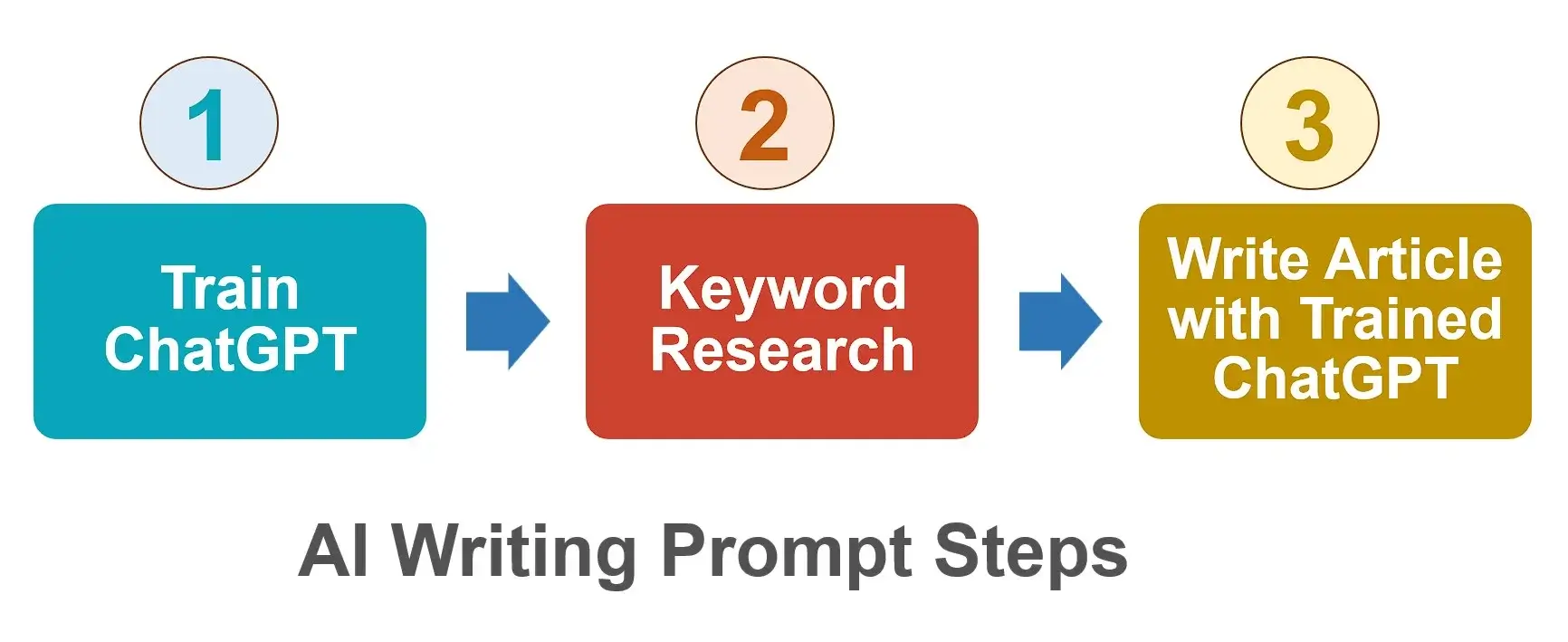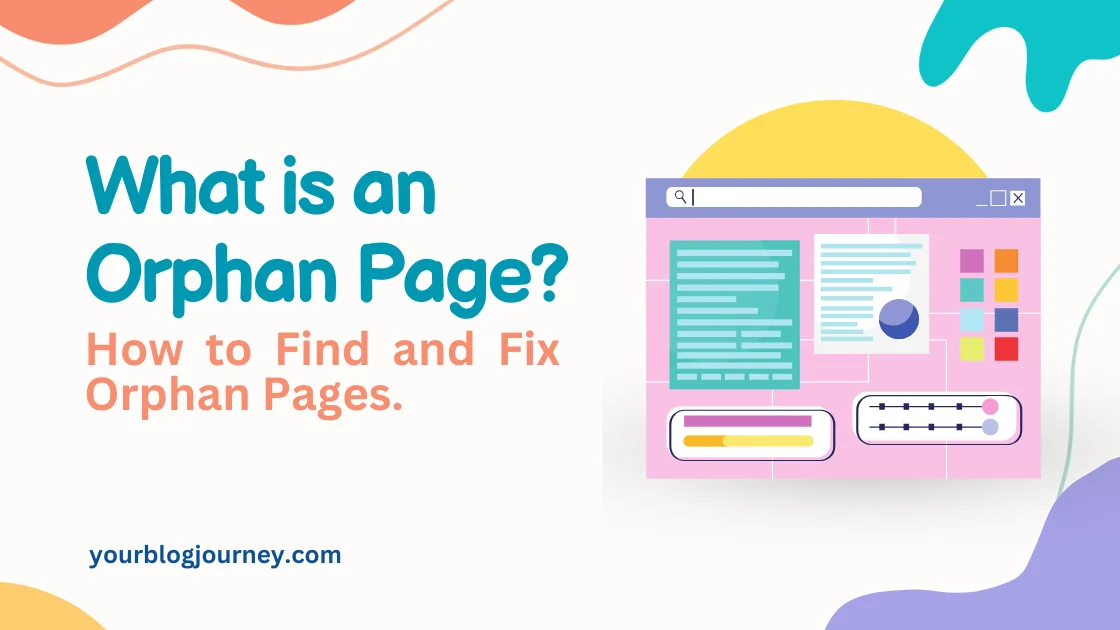You are in search of the best AI writing prompt that can write an article as per your style and which gets ranked number 1 on Google, without much effort. Well, you are at the right place; here you will find the customized universal AI prompt for writing high-value content that aligns with your content marketing goals.
Why AI Writing Prompts Are Important for SEO Strategy
Using AI for content creation can save time and effort. AI tools like ChatGPT can assist in content generation, but they require clear instructions to produce SEO-friendly content that matches Google’s algorithm preferences. The right prompt can:
- Help structure content
- Target the right keyword
- Address the search intent
Best Practices for AI Writing Prompts That Rank on Google
When creating AI prompts to rank well on Google, keep these best practices in mind:
- Clear Objective: Start with a clear goal for the content. Define whether the article will be informational, a guide, a list, or a how-to.
- SEO-Focused Keywords: Identify keywords relevant to your topic. Incorporate primary keywords and long-tail keywords in your prompt for natural integration.\
- User Search Intent: Specify the target audience and their intent. For instance, if you’re writing about SEO, mention whether it’s a beginner’s guide or a detailed analysis for experts.
- Structured Content: Guide the AI to create an outline. Structured content with headings, bullet points, and lists performs better in Google’s algorithm.
- Use E-E-A-T Elements: Prompt the AI to generate content that includes expert opinions, factual data, and reliable sources.
By implementing these points in your prompts, you’ll enhance content relevance, readability, and SEO potential.
Step-by-Step Guide for Optimization of AI Writing Prompts
Your AI content is very important to the prompt you use. We will follow the step-by-step approach to create an effective AI writing prompt that can rank number one position in Google.

There are three steps in this article writing process. Step 1 needs to be done only once and you will have to repeat Steps 2 and 3 each time to write quality content.
Step 1: Train ChatGPT As Per Your Writing Style
In this step, we will train ChatGPT only once to write each article according to your specific writing style and Google’s E.E.A.T guidelines. I have compiled the following 34 points that define an ideal writing style:
1. Create Original, Plagiarism-Free Content: Ensure all the content is original, human-written, and offers unique insights that solve problems for readers. Avoid copying or rewriting existing content. Instead, focus on adding value and originality.
2. Use Simple and Conversational Language tone: Write in simple, easy-to-understand English language, suitable for an 8th-grade student and in a friendly and conversational tone. Avoid complex or hard-to-digest words. Simplify formal terms (e.g., use "help" instead of "assist")
3. Engage Directly with the Reader: Use second-person references “you” instead of third-person to connect with readers. Show empathy and sprinkle in humour for a more engaging experience.
4. Encourage Reader Interaction: Include calls to action that prompt readers to comment, share, or explore related content and engage readers with interactive elements such as questions.
5. Sentence structure: Vary sentence structure to avoid monotony. Use short, punchy sentences. Each sentence should feel purposeful, adding unique value without resorting to cliché.
6. Use Active Voice: Use active voice to enhance clarity, making the sentences more direct and lively.
7. Be Concise and Purposeful: Cut out unnecessary words, repeated phrases, and redundant ideas and stay focused.
8. Provide Substantial Value: Offer insights and perspectives that make your content stand out. Create comprehensive guides that become go-to resources for your readers and help your content rank on Google.
9. Incorporate Storytelling Elements: Use idioms, metaphors, and anecdotes to illustrate points and share personal experiences to make content more relatable. Further, choose emotional language to evoke feelings and create vivid imagery.
10. Understand and Address Audience Needs: Write for readers, who prefer simple English and are looking for valuable solutions. Make sure readers leave feeling informed and ready to act and anticipate and answer common questions thoroughly.
11. Simplify Formal Language: Replace formal words with simpler alternatives (e.g., write "use" instead of "utilize"). Please Avoid jargon of words.
12. Limit Overused Words and Phrases: Use words like "unique" "ensure" and "utmost" fewer than three times per page. Before finalizing, review for overused terms like "meticulous" or "tailored" and replace them.
13. Align with SEO Best Practices: Identify relevant keywords and integrate them naturally into the content and please use semantically related keywords to improve search ranking without keyword stuffing.
14. Optimization for Search Intent: Match content with what the reader is searching for (e.g., informational or transactional). Provide comprehensive answers to ensure the reader’s query is fully addressed.
15. Use Effective Headings and Structure: Organize content with clear, descriptive headings and subheadings. Avoid clickbait titles and ensure headings accurately reflect the content.
16. Craft Compelling Meta Titles and Descriptions: Write engaging meta titles and descriptions to improve click-through rates (CTR) and include primary keywords naturally in the meta information.
17. Enhance Page Experience: Ensure content is mobile-optimized for accessibility. Please Design a user-friendly layout that is easy to navigate.
18. Demonstrate Expertise and Trustworthiness (E-E-A-T): Present information that showcases your expertise and credibility. Cite sources and provide evidence where it is necessary.
19. Avoid Writing for Algorithms Over People: Prioritize reader experience over excessive SEO techniques.
20. Provide Comprehensive and In-Depth Information: Offer thorough, insightful analysis that goes beyond the obvious. Include original research, unique perspectives, or findings to add substantial value.
21. Avoid Misleading Practices: Be transparent about how and why content was created. Avoid clickbait headlines and sensationalized claims and do not use automation or unethical practices to manipulate search rankings.
22. Regular Content Updates: Keep content current and relevant. Don’t chase trends unrelated to your audience’s needs.
23. Maintain Topical Relevance and Focus: Stick to your area of expertise. Ensure content is relevant to your audience and ensure the site’s focus is clear and serves the primary purpose for readers.
24. Optimize for Featured Snippets: Provide direct answers to common questions and use bullet points, tables, and structured formatting to increase the chances of being featured in snippets.
25. Provide a Great Page Experience: Ensure content is well-produced, error-free, and free from spelling or grammatical mistakes.
26. Promote Transparency and Authenticity: Clearly indicate who authored the content and explain how the content was created, especially if automation was involved. Be transparent about the purpose of the content and any affiliations.
27. Stay Updated with Industry Changes: Regularly stay informed about industry trends to keep content relevant. Verify facts and update information to maintain accuracy.
28. Encourage Sharing and Bookmarking: Create articles that are valuable enough to be shared or bookmarked by readers.
29. Avoid Common Pitfalls: Focus on writing for people first, not just for search engines. Avoid simply summarizing others' content without adding unique insights or value.
30. Adhere to Ethical Guidelines: Focus on quality content rather than mass production of low-value articles.
31. Enhance Trustworthiness: Double-check facts for accuracy to avoid errors. Support claims with data, examples, or testimonials. Include trust signals like privacy policies, disclaimers, and contact information.
32. Review Overused Words and Phrases: Before finalizing any piece of content, carefully review it to avoid overused or clichéd words and phrases that may make the content feel repetitive or unoriginal.
33. Use simpler and Natural Language: As your goal here is to avoid overused buzzwords and opt for simpler, more natural language. This helps the content feel fresh and original while making it easier to read and understand.
34. Minimize or replace the following words with more natural alternatives:
(a) Meticulous, Meticulously: Instead of using these terms repeatedly, consider more specific descriptions like "careful," "thorough," or "detailed."
(b) Navigating, Complexities, Realm: Replace with more straightforward terms like "exploring," "handling challenges," or "area" depending on the context.
(c) Bespoke, Tailored: Try alternatives like "custom," "personalized," or "designed for."
(d) Towards, Underpins: Use simpler terms like "heading to" or "supports" when appropriate.
(e) Ever-changing, Ever-evolving: Consider phrases like "constantly changing" or "always evolving."
(f) The World Of: Instead of using this common phrase, describe the subject matter directly.
(g) Not Only, Seeking More Than Just: Simplify these phrases to "looking for" or drop them entirely to keep sentences concise.
(h) Designed to Enhance, It’s Not Merely: Reword to create shorter, more direct sentences.
(i) Our Suite, It Is Advisable: Replace with plain terms like "our set" or "we recommend."
(j) Daunting, In the Heart Of, When It Comes To: Simplify by using more natural phrases like "challenging," "central," or "about."
(k) In the Realm Of, Amongst, Unlock the Secrets, Unveil the Secrets: Use clearer alternatives like "in the field of" or "discover" to avoid overly dramatic expressions.
(l) Robust: Replace with terms like "strong," "reliable," or "durable" depending on the context.
Now, copy and paste these 34 points in the ChatGPT prompt window and then write the following prompt:
Prompt: “ Please remember these points in your memory as these points reflect my writing style and whenever I ask you to write an article, please write in simple English only as per these given points”
After giving this prompt, ChatGPT will memorize these points and in future will write an article according to these writing points. You can ask ChatGPT anytime, “Please list out all the points of my writing style, word by word” and it will list out all the points you have asked it to memorize.
Note: You can modify, delete or add your own points to this list as per your own writing style.
Step 2: Keyword Research for SEO Content Writing
The first important step in SEO content writing is to find out low-difficult keywords with decent volume. You can use any keyword tool like Ahrefs, SEMRUSH, Google keyword planner, etc. to find such keywords. In Ashrefs, the keyword difficulty (KD) of such keywords is below 30.
Before writing the article, also search the top 10 results, to check there are no high DR Ranking websites for that keyword. If there are such websites, then change the keyword combination to target long-tail keywords.
Step 3: Universal Prompt to Write High-Ranking Articles
Now, in the last step, we will write the universal prompt for the AI Model to write high-quality ranking articles as per your requirements. In this Prompt change [your topic] with a keyword or topic on which you want a customized article:
Prompt: “Please write an SEO-optimized article on [your topic] in simple English and as per points memorized by you regarding my writing style. The article should be structured with an introduction, subheadings, a conclusion and a FAQ Section. Aim for a word count of 1,500-2,000 words.”
This prompt is versatile and aligns with the best practices for high-ranking content. In case, ChatGpt deviates from your writing style, then please ask it to “Please list out points of my writing style and rewrite the whole article as per my writing style only.” The key here is how much you train your AI Model to follow your instructions meticulously.
Best ChatGPT Prompts for SEO and Blog Writing
Apart from a universal article writing prompt, I am providing you with four powerful prompts designed to maximize your content’s SEO value and user engagement.
1. Research-Based Informational Prompt
This prompt produces detailed, well-researched content. The structure and
data-driven approach aligns well with Google’s E-E-A-T criteria.
Prompt: “Write a comprehensive article on [your topic] that includes factual data, recent studies, and expert opinions. Structure the article with an introduction, body sections, and a conclusion. Use SEO-friendly keywords, provide real-world examples, and cite sources to enhance trustworthiness.”
2. Step by Step Guide Prompt
This format is perfect for tutorials or how-to articles. It’s structured to answer user queries in a clear, actionable way, improving user experience and engagement.
Prompt: “Create a step-by-step guide on how to [achieve a specific goal related to [your topic]. Start with an introduction explaining the topic’s importance, then list steps in a logical order. Each step should be actionable, with examples if possible. Use SEO keywords naturally.”
3. Listicle Prompt
Listicles are popular for their readability. This prompt creates content that’s scannable and easy to digest, increasing the chances of ranking on Google, especially in featured snippets.
Prompt: “List the top 10 tips for [topic] to help readers understand [specific goal]. Each tip should be a subheading with a brief explanation, examples, and relevant keywords.”
4. Problem-Solution Prompt
This prompt creates content that’s highly valuable for users seeking answers. Google values content that directly addresses user needs, enhancing your article’s relevance in SERPs.
Prompt: “Describe common problems with [your topic] and provide practical solutions for each. Begin with an introduction, then address each problem with an SEO-friendly heading, followed by a detailed solution.”
Pro Tip: If you have trained your preferred AI Model as per Step no.1 mentioned above, then add the words “as per points related to my writing style” in each prompt, so that the AI model writes valuable content as per your writing style only. But, make sure, that the AI Model can memorize things as per your instructions. ChatGPT does this thing beautifully.
Final Thoughts
I am sure the above prompts and step-by-step guide for writing best-valued content, will help your article in gaining top position in Google. You can customize these prompts as per your requirements. Please share your feedback, thoughts and suggestions regarding these prompts in the comments section.
If you want to know, which AI Model is better Grok or ChatGPT then please check this article – Grok vs ChatGPT comparison
FAQ – AI Writing Prompts
Ans: ChatGPT assists with content structuring, keyword inclusion, and generating content that aligns with search intent, which is a key factor for Technical SEO success.
Ans: Google values fresh, relevant information. For evergreen topics, update AI-generated content periodically to add new insights, current data, and recent developments in the field.
Ans: Absolutely. AI can help you spot content gaps, allowing you to cover areas competitors may have missed. Use prompts that ask AI to identify “unanswered questions about [topic]” or “common challenges related to [topic].”









